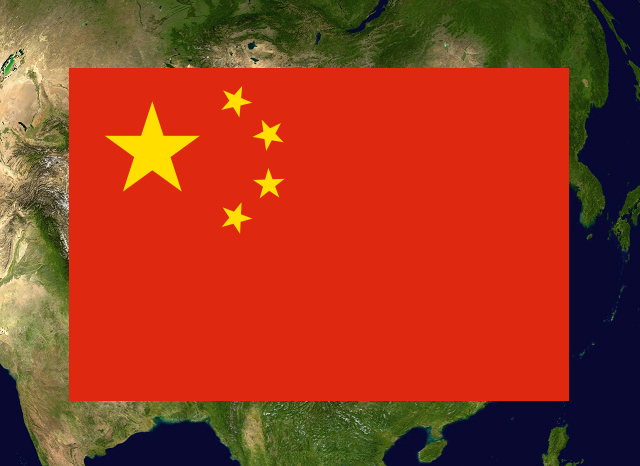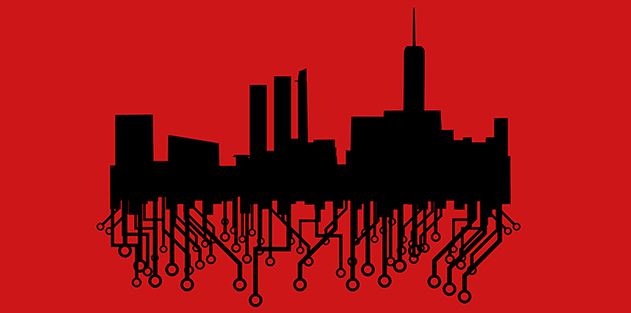In the battle to win the hearts and minds of the world, the Israeli war against Hamas in Gaza has seen Psy-Ops raised to a new level of intense information overload. Through the use of operational blogs, websites, Facebook pages and Twitter accounts both antagonists have flooded the internet with graphic images, videos and propaganda endeavoring to convey messages about their war aims. They are cultivating positions that reflect real time actions on the battlefield. Israel, while punishing Hamas and Palestinian Islamic Jihad in Gaza through aerial strikes, bombardments and a massive ground incursion has justified their actions because of the rocket war on its civilian population. IDF and independent Israeli hasbarah social media operations have taken great pains to illustrate the extent to which Israel goes to warn Palestinians in Gaza of intended targets via cell phone Text messages, Tweets and even non-explosives missiles.
Israel is concerned about homes, schools, hospitals and other buildings, some of which harbor launching sites, command and control centers and armories of rockets and weapons. The discovery of a massive network of tunnels, many interlaced and excavated under the Israel- Gaza frontier, have become a prominent aspect conveyed in videos of captured facilities. Battles with Hamas and Palestinian Islamic Jihad suicide terrorists have taken a toll of IDF fallen. Hamas has produced Tweets with graphic images of alleged women and children killed due to Israeli missile and artillery attacks. Many of these images have been photo-shopped, faked or purloined from the Syrian civil war and even Hollywood films. That has led to blocking of Hamas twitter accounts. The two sides frequently accost each other in social media in a number of different languages seeking to win over the world’s opinion.
A BBC report, “Hamas and Israel step up cyber battle for hearts and minds” highlighted the Hamas military wing’s Twitter campaign:
The English-language Twitter account of Hamas’ military wing, the Izz al-Din al-Qassam Brigades, provides updates on casualties resulting from Israeli air strikes and reports on its own rocket activity, mirroring the IDF’s account.
The Qassam Brigades operate several Twitter accounts in different languages, including Arabic and Hebrew, some of which have, at times, been suspended.
Using the hashtags #GazaUnderAttack, #Gaza, #StopIsrael, and #PrayForGaza, the accounts defend the Qassam Brigades’ actions and highlight the plight of Palestinian civilians. In a tweet that appeared to be aimed at the international community, the group said Palestinian casualties were “not just numbers.”
The prominence of social media in the current IDF Operation Protective Edge first began during the eight day Operation Pillar of Defense in November 2012. IDF spokesperson Lt. Col. Peter Lerner spoke about the rising importance of social media in a recent Wall Street Journal article, “Israel and Hamas Take Fight to Social Media”:
“We have invested a great deal in our social media presence over the last two years.” One of the latest evolutions was the IDF’s ability to roll out battlefield video on a real time basis. In 2012, Israel set up a video war room, where staff could comb footage beamed straight from units on the battlefield. Footage is selected, edited and sent out — at times directly to journalists and at other times to IDF blogs and social-media accounts.
The IDF expanded the social media staff from less than 5 in 2010 to 40 currently, delivering information via “blogs You Tube, Twitter, and Google+ in five languages.”
The WSJ account contrasted the followings of both the IDF and Hamas:
The Israeli Defense Force’s main Twitter account (@IDFspokesperson) has more than 327,000 followers.
Hamas has been honing its own message on Twitter, while increasingly bringing responsibility for the effort in-house, instead of relying on outside activist groups to get its message across. Both the military and political arms of the organization operate accounts. The Arabic account of the military arm Qassam_Arabic@ @qassam_arabic1has attracted more than 58,000 followers.
Hamas is a foreign terrorist organization so designated by the US State Department. It has been suspended by Twitter for violations of its operating standards that prohibit “direct, specific threats of violence and prohibit people “barred from receiving services” under U.S. law from using the service.”
Watch this Wall Street Journal, Digits video on Israel Hamas War Extends to Social Media:
#IsraelUnderFire –the media savvy students at Israel’s IDC
400 tech savvy students at the Interdisciplinary Center (IDC) in Herzliya, Israel have been engaged in the Psy-ops social media campaign of the current conflict using the hashtag, # Israel Under Fire. The Jerusalem Post noted the student run IDC effort began during Operation Pillar of Defense in November 2012:
The Student Union initiated the center two years ago under similar circumstances.
“During Operation Pillar of Defense we all worked at the Student Union and students were getting called up for reserve duty,” said Yoseph. “We thought, since we weren’t being called for reserve duty, why don’t we work on hasbara and help in the way that we can.”
Through the hasbara efforts during the previous round with Hamas, the IDC advocacy room was able to get their message out to an estimated 21 million people around the world. The students created a Facebook page and twitter account under the now-popular “Israel Under Fire” catchphrase, through which they conducted their hasbara efforts.
“We basically picked up where we left off [after Operation Pillar of Defense],” explained Yoseph.
[…]
Currently their operations encompass activities in 31 languages in 62 countries and have so far garnered some 6,000 followers on Twitter and some 55,000 likes on Facebook. They have also opened a dedicated website available in 13 languages, with informative texts, videos, pictures, and testimonials – www.Israelunderfire.com.
One of the prominent concerns of the IDC hasbara team is combating Hamas imagery of what PM Netanyahu has called the “telegenically” dead. A reference to possible faked imagery of casualties. A team leader at the IDC student union program noted:
Tal Yaffe, an Israeli student at the IDC, explained that “the current situation forces us to fight on all fronts. Hamas doesn’t have the military capabilities to harm us, but they can harm our legitimacy in the world and also harm the motivation of the citizens of Israel.”
According to Yaffe, who is responsible for managing the website, social media has become one of the most important tools in the war effort. “When the truth is on our side and we can show that statements or images that Hamas has put out there are false, then the truth spreads faster than on any other media; and we see that what happens on social media also affects the international media,” he explained.
A Palestinian critic of the IDC student effort is Ali Abunimah of the Chicago-based Electronic Intifada. Abunimah was friend of President Obama during the latter’s period as an Illinois State Senator when he was prominently supporting the Palestinian cause. An Electronic Intifada article on the IDC student hasbarah effort was headlined, “Israel student union sets up “war room” to sell Gaza massacre on Facebook.”
Abunimah calls it “organized lying” alleging that, “the National Union of Israeli Students, of which the IDC Herzliya student union is an affiliate, has a history of working on government-funded propaganda schemes, where students are recruited as the country’s “pretty face.”
Perhaps, by Abunimah’s drawing attention to the success of the IDC social media “war room” he is ruing the lack of traction that the PA has had getting exposure in the Hamas war against Israel.
Watch this IDC student You Tube video exposing Hamas’ use of Hollywood film imagery:

The World’s First Facebook/Twitter Rally: #DefundHamas.
When Israel began Operation Protective Edge, the volunteers of the National Security Communications Task Force (NSCTF) of The Lisa Benson Radio Show came up with a brilliant idea. Why not hold the world’s first Facebook /Twitter rally on Tuesday, July 16, to tie in with a social media campaign hashtagDeFund Hamas? A website was quickly put up with the assistance of Larry Ward in Washington, DC at Political Media and blitz emails, Facebook posts and Tweets were sent. This was not an off the cuff effort, as it had first been broached two years ago in conversations between radio talk show host Lisa Benson and Texas ‘mom’ and Ann Linahan, an accomplished user and trainer in the adroit use of social media. They were searching for the right moment and cause to unleash the power of social media. The opening salvos of the rocket blitz by Hamas against targets in Israel gave them that defining moment. Linahan had been involved with several social media campaigns in Texas and nationally in opposition to adoption of the Common Core Curricula. Her email handle MsEmpower capsules the essence of why she has argued that social media works. Benson had experience as a professional fund raiser and both in Israel and Jewish community causes as a former Federation executive. Like many, Benson became more conservative especially on the matter of support for Israel, national security and immigration border security matters in her adopted state of Arizona. Benson, raised in Long Island New York had something else in her family background. Her father had been a liberator of a Nazi concentration camp in Germany late in the Second World War. Averting a second holocaust, whether triggered by a nuclear weapon from Iran or rockets from its proxies, Hezbollah in Lebanon or Hamas in Gaza was something that was foremost in her mind.
The ground work was prepared through a series of private web seminars (webnairs) conducted by Linahan with members of the NSCTF. During those webnairs, Linahan taught the techniques of using social media to push issues and gain the attention of media and influential state legislators and Members of Congress.
Linahan informed the trainees that the success of the Obama Presidential campaigns in both the 2008 and 2012. came in no small measure because the campaign team understood the power of social media. That enabled them to cultivate grass roots support especially among the Gen X millenials who relied on Facebook, Twitter and other social internet groups to communicate messages. She told her students, many of them older adults, to read the social media bible, Tribes by Seth Godin. Godin was VP for Direct Marketing at Yahoo! prior to the launch of his career as a social media guru. The subtitle of Tribes, “we need you to lead us,” is all about “leading, connecting and creating movements.” According to Godin a Tribe is:
…a group of people connected to one another, connected to a leader, and connected to an idea. For millions of years, human beings have been part of one tribe or another. A group needs only two things to be a tribe: a shared interest and a way to communicate.
Tribes is the social media bible for community organizers and political operatives on the left akin to Saul Alinksy’s Rules for Radicals. Godin’s basic communication meme is behind the use of Twitter, “If you can’t state your position in eight words, you don’t have a position.” Another that Linahan frequently quotes by Godin is:
People don’t believe what you tell them. They rarely believe what you show them. They often believe what their friends tell them. They always believe what they tell themselves.
In an era where people do not read daily newspapers or have time to listen to talk radio or watch cable TV news programs. Instead they respond to the latest from their engaged minority, connected authorities, leaders on Twitter, and become followers and pushers retweeting those messages to their social networks. The connected authority in the local community are the activists conveying messaging to the local passive majority.
The NSCTF webnairs had prepared a cohort of older social media users, turning them into connected authorities and pushers anxious to try out their new social media tools defending Israel. The Lisa Benson NSCTF sent out an alert by Facebook and Twitter that a Facebook/Twitter Rally would be held between the hours of 4PM and 10PM EDT on Tuesday, July 16th. The hashtag #DefundHamas entreated Congress to hold off appropriations to a Palestinian unity government with Hamas. Those appropriations were composed of $440 million for Security and another $200 million “donation” to support the UNWRA Palestinian refugee program. A program established in 1950 that supports a network of refugee camps in Gaza, the West Bank, East Jerusalem, Jordan, Lebanon and Syria. The Gaza UNWRA schools and social services facilities had alleged employed Hamas and Palestinian Islamic Jihad operatives and have been revealed to have caches of rockets.
The cement for the virtual rally was a continuous open free conference call, the inspired suggestion of Lisa Benson. That enabled participants to suggest possible tweet messages, and target influential Members of Congress and the media personalities used variations of the basic #DefundHamas theme. Alice Linahan acted as coach throughout the 6+ hours of the open conference call giving encouragement and advice to the tyros enabling them to vault technical hurdles of scripting effective tweet messages. Lisa Benson provided news updates and suggested tactical shifts in Facebook posts and tweets. While it took several hours to build up a head of steam in the rally, by 7:00PM EDT there were over 600 people involved. They were from all across the US and despite the time differences there were Israelis and Europeans. They sent Tweets at a trended rate of over 828 per hour according to the analytics service, Scoopnest.com. Overall, the virtual NSCTF group averaged a trended production of 600 tweets an hour over the five hours. At one point Twitter blocked production because of the surge in tweeting. Look at the range of tweets and retweets sent during the #DefundHamas rally, here. Production and pushing of Tweets continued for several hours after the 10PM EDT close of the open conference call.
The NSCTF rally fought battles with Hamas supporters in Gaza who shot off retorts from their iPhones and iPads between courses of the nightly Ramadan meal. Lisa Benson commented that you knew when they had finished their evening Ramadan meals in Gaza, the rocket barrages against targets in Israel were launched, tracked by the iPhone Red Alert app.
There were some surprise responses during this hashtag battle by the NSCTF contingent. Benson got a Tweet from Al Jazeera America requesting her to call a producer at their US TV news channel for an interview. Because of several tweets directed at Senators and Members of Congress, they had Tweets from the staff of Sen. Rand Paul, US Representatives Hunter Duncan (R-CA 50th CD) and Hal Rogers (R-KY 5th CD).
The world’s first Facebook/Twitter rally was a success on several levels. It produced a community of trained social media campaigners ably supported by a team of activist specialists led by Linahan and Benson. It was life enhancing. One woman wrote of the exhilarating experience of spending over six hours on her kitchen stool zapping tweets from Hamas and connecting with Members of Congress. Another spoke of being surrounded by her family, the children especially in awe that their parents were engaged in fighting back. The dynamic process of this social media rally has led to another that will occur on 9/11/14 which will bring together noted speakers on an open conference call interspersed with the responses by Linahan and words of encouragement from Benson.
Lots of innovation is occurring in the social media war that erupted on July 8, 2014 with Hamas rocket barrages raining down on Israel. That was dramatically heightened by the exposure of the ‘terror tunnels’ threat to Israel revealed during the IDF’s ground incursion begun on July 17th. While Israel’s IDF and Hamas’ military wing square off with graphic Tweets, videos and Facebook posts, the privateers at both the IDC in Israel and the National Security Communications Task Force team have revealed how effective the social media battle has been in communicating messaging in both current and future conflicts.
EDITORS NOTE: This column originally appeared on the New English Review.






.jpg)














